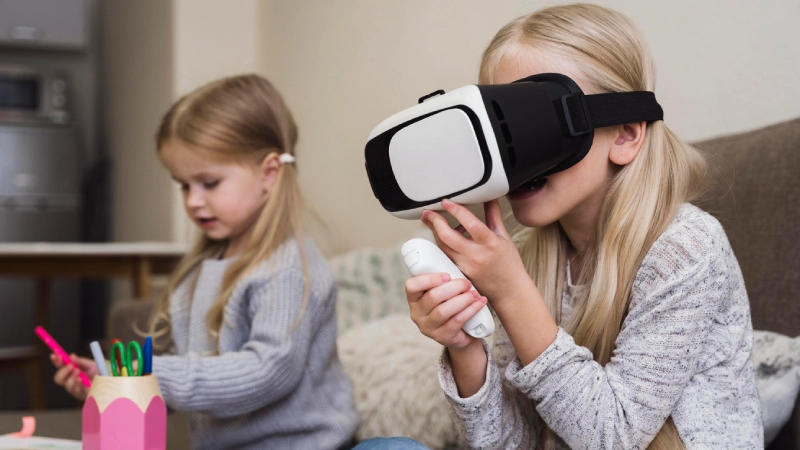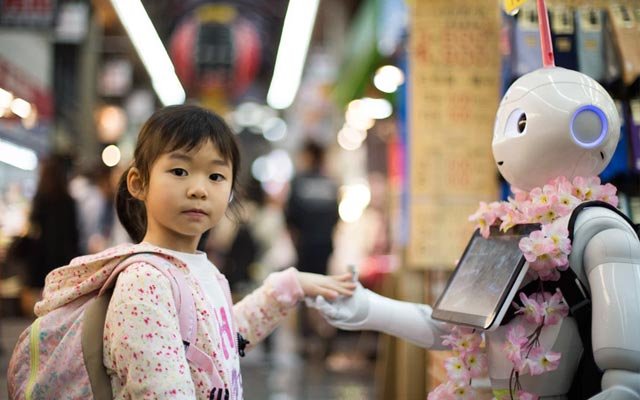Table of Contents
Highlight
- Best Learning Gadgets for Kids 2025 combine fun, creativity, and STEM-based education.
- Smart Learning Tools like Osmo and Kano make coding and problem-solving engaging.
- Educational Gadgets for Kids promote safe, adaptive, and personalized learning experiences.
Introduction: The Evolving Role of Learning Gadgets
The year 2025 marks a period where very interesting emerging forces development for the evolving child is observed at the intersection of technology and education; in other words, technology and education intersect in development for children, altering the mechanisms that young learners now employ in navigation, searching, and information internalisation. The variety that is given to children nowadays should not merely entertain them but also aid cognitive, social, emotional, or moral development. This article examines what constitutes a truly effective learning device for children today, profiles some standout devices and systems, and considers the larger implications of turning to technology in early education.

Technology for kids’ learning has come a long way. Formerly novelty bits, touchscreens, recorded speech, and basic interactive games—nowadays, gadgets are more responsive, socially intelligent, improved in safety design, and committed to skill mastery with substance. Contemporary gadgets need to get the act right: engaging enough to hold attention, yet organised enough to guide learning in areas such as STEM, literacy, creativity, and emotional intelligence.
Criteria for a Good Learning Gadget
A good gizmo in 2025 generally marries real-world and virtual interaction, so kids learn through touching and imagining. Adaptive learning is mostly accepted as the gadgets adjust themselves to the child’s pace or the challenge of problems. Attention to safety, privacy, and age-compatibility is one matter of concern; parental control and choice of content constitute the rest. But above all, the best gadgets shall promote collaboration between peers, parents, or teachers rather than isolate the kid.
Combining Physical Play with Digital Learning: Osmo
Among the high points is the Osmo Genius Starter Kit, which employs tangible pieces, tiles, letters, and shapes that a tablet camera identifies, making them interactive lessons. The 2025 version adds environmental science and money literacy modules, placing technology in line with essential twenty-first-century skills. Osmo shows how gadgets can go beyond simple learning, making kids aware of systems thinking and managing resources while being enjoyable and hands-on.
Coding Made Playful: Sphero BOLT+
With new sensors, AI modules, and interactive input capabilities, kids can create obstacle courses, program routines, and experiment with hypotheses of motion, light, and sound. Through fun experiments, they develop key abilities in logic, debugging, predictive thinking, and problem-solving—abilities at the core not just for STEM but also for daily reasoning.

Learning from the Inside Out: Kano Build & Code Kits
The Kano PC Build & Code Kit inspires kids to build their own computers. Revised in 2025, Kano’s kit includes lessons on cybersecurity and AI literacy. Kano is one of the many tools used for teaching kids to code and, simultaneously, to learn about hardware, networking, and data ethics. By democratising tech, Kano basically gives kids the ability to move from passive consumers to active creators, empowered digital citizens.
Long-Lasting Tools for Early Learners: LeapFrog LeapPad Academy
For younger kids, devices need to survive frequent usage while providing a secure, age-suited environment. The LeapFrog LeapPad Academy Tablet personifies this with rugged construction, built-in literacy and math activities, and intuitive navigation. It offers a carefully curated platform where key reading, counting, and shape skills can develop without overloading young students.
Storytelling and Discovery with AR and Globes
Books and maps, too, have gone digital. Interactive globes offer real-time quizzes and cultural tidbits, and AR storybooks project animations and vocabulary aids onto printed pages. These technologies enhance the process of reading and discovery, making learning multi-sensory. They strike a balance between tradition and innovation by employing haptic media—books and globes—as gateways to interactive, digital learning paths.

AI Companions: Miko and Beyond
Maybe the most future-like devices are AI friends like Miko 4, which act as interactive tutors, narrators, and emotional friends. These gadgets recognise voices, adjust lesson complexity, and even occasionally respond to emotional needs. They demonstrate the power of personalization in learning, with each child’s performance being dynamically tailored. But they also come with worries over over-automation, screen time, and substituting human direction during formative years.
Creativity with Robotics and Maker Kits
Maker kits such as Makeblock’s Codey Rocky and Neuron focus on hands-on exploration. Kids construct robots, hook up sensors, and create circuits, learning how concepts become tangible realities. Through assembly and debugging, they participate in active problem-solving and collaboration. These kits grow well with age, providing progressively more sophisticated challenges as kids mature, so that the learning process stays dynamic and interesting.
Early Childhood Gadgets: Constructing the Fundamentals
In toddlers and preschool children, learning devices should prioritize sensory interaction and protection. Sound-along flash cards, interactive sound tablets, and basic tablets with edited content teach letters, colors, and reasoning without demanding higher literacy. These devices operate offline or with limited internet connectivity, so viewing unsuitable content is minimized. Focusing on fun repetition and rewards, they construct early intellectual confidence.
Even if they are good, excellent educational devices are not available to all. Most families are not able to pay for high-end devices, and schools in disadvantaged communities have a much bigger problem. Subscription, replacement, and upgrade costs further exacerbate the digital divide. Absent careful policies and public investment, there is a risk that only children from prosperous families will gain access to the finest of 2025’s learning technology.

Privacy, Data, and Ethical Concerns
Most of these devices amass sensitive data, including learning activity, voice recordings, or even geolocation. Laws like COPPA and GDPR provide guidelines, but enforcement is inconsistent, and parents need to be alert. No less essential is the issue of bias in AI friends: who creates the “knowledge base” and whose cultural values are embedded? To provide true educational benefit, developers should ensure transparency, representation, and sensitivity to children’s rights.
An ongoing concern is the amount of time kids spend with devices. While these machines can stimulate and captivate, overuse threatens to shorten attention spans, curtail physical play, and condition dependency on gamification rewards. The best solution is moderation: incorporating gadgets as one among many methods, together with reading, outdoor play, music, and freestyle creativity.
Conclusion: Learning in Balance
The
of learning devices will probably focus more on sustainability and inclusivity. Products produced from recycled materials, modular components, and longer durations will solve environmental problems. Content in local languages, offline support, and cultural sensitivity will take advantage of diversified populations. As artificial intelligence gets more integrated, transparency regarding its usage in feedback and instruction will be important to preserve trust.
The best gadgets for kids’ learning in 2025 succeed not because they are flashy, but because they blend entertainment with education in developmentally respectful ways. From Osmo’s tangible play activities to Sphero’s coding adventures, through Kano’s hands-on hardware, to AI companions like Miko, there are myriad ways in which technology, when applied well, can make a difference. However, these tools are not some sort of cure-all.

A child learns best when his or her development is set in a balanced atmosphere where the technology only supports and does not stand for human connection, curiosity, and play. The immediate question remains for parents, educators, and policymakers: How do we ensure these tools continue to bring education to life, fuel imagination, and remain in the public domain free of hazards and sustainability concerns in this fluid environment?